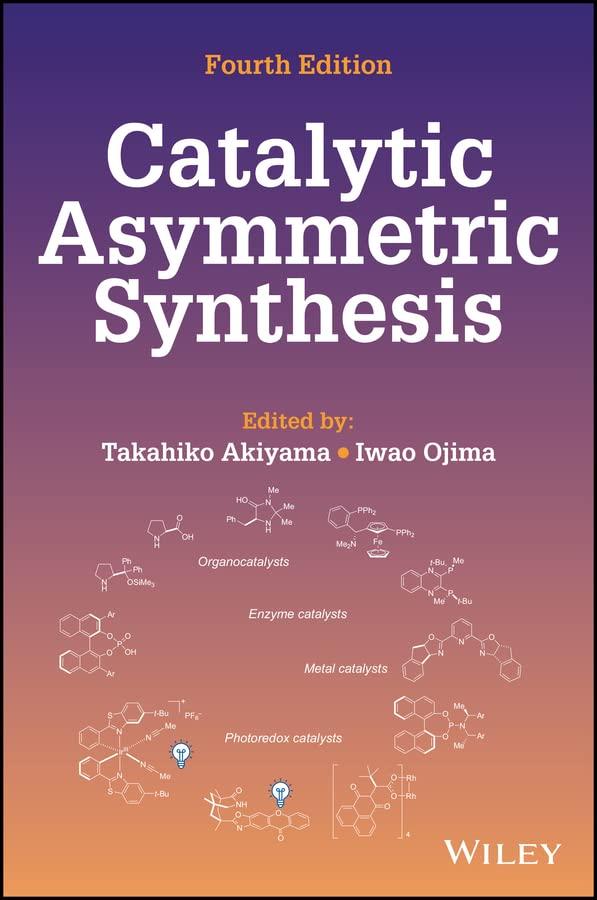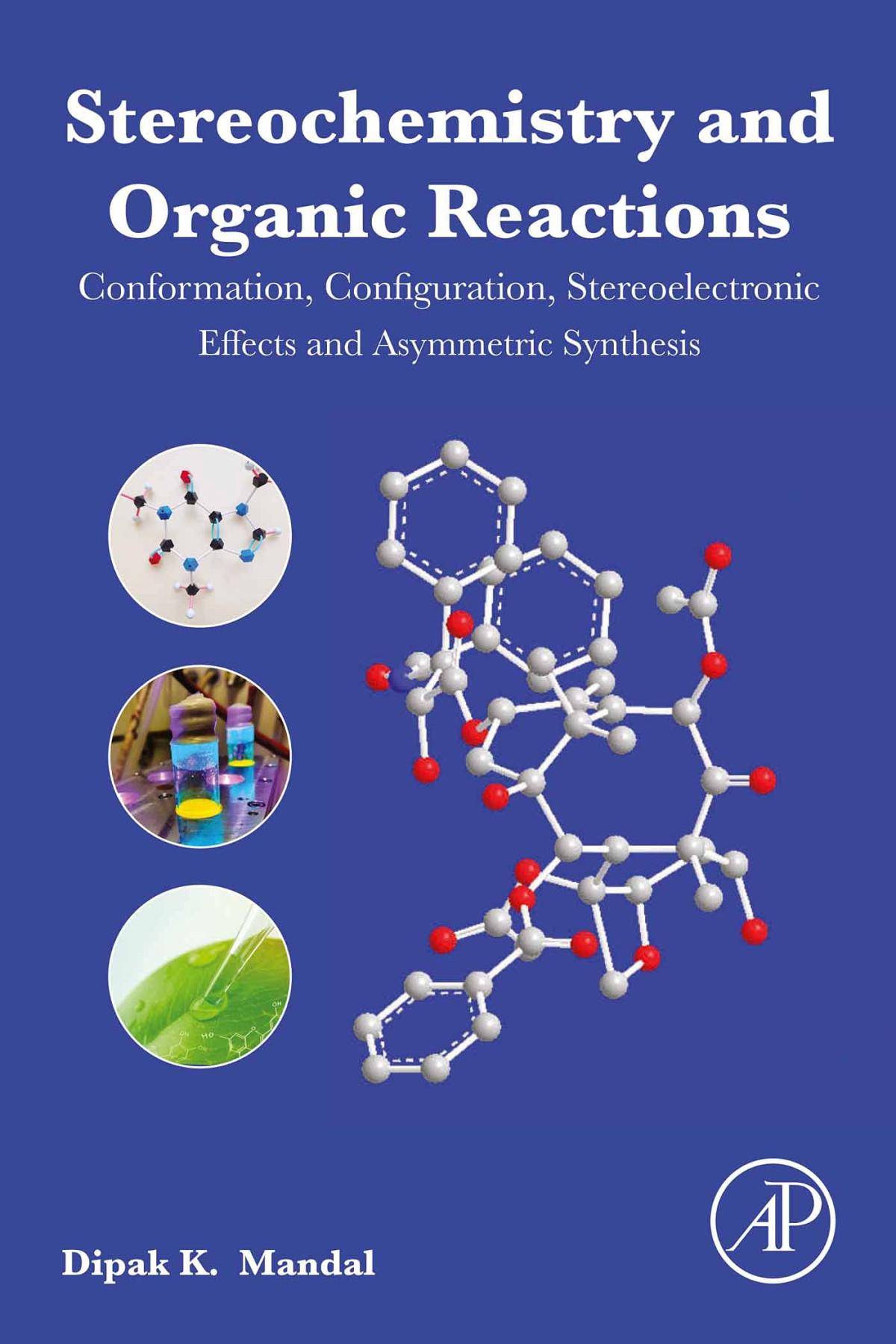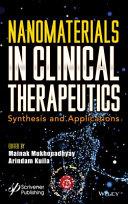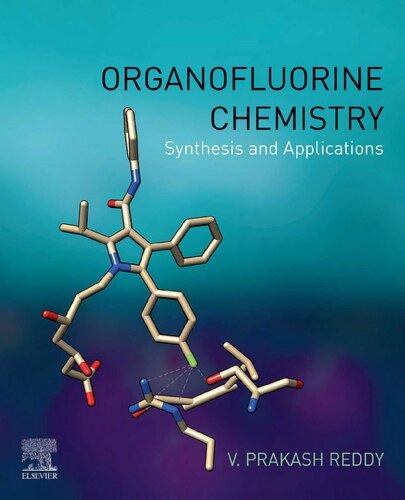ChiralBuildingBlocksinAsymmetric Synthesis
SynthesisandApplications
Editedby
ElzbietaWojaczy´nska
JacekWojaczy´nski
Editors
Prof.ElzbietaWojaczy´nska WrocławUniversityofScienceand Technology
FacultyofChemistry
Wybrze ̇ zeWyspia ´ nskiego17 50370Wrocław Poland
Dr.JacekWojaczy´nski UniversityofWrocław FacultyofChemistry 14F.Joliot-CurieSt. 50383Wrocław Poland
CoverImage:Courtesyof Prof.E.Wojaczynska
Allbookspublishedby WILEY-VCH arecarefully produced.Nevertheless,authors,editors,and publisherdonotwarranttheinformation containedinthesebooks,includingthisbook, tobefreeoferrors.Readersareadvisedtokeep inmindthatstatements,data,illustrations, proceduraldetailsorotheritemsmay inadvertentlybeinaccurate.
LibraryofCongressCardNo.: appliedfor
BritishLibraryCataloguing-in-PublicationData Acataloguerecordforthisbookisavailable fromtheBritishLibrary.
Bibliographicinformationpublishedby theDeutscheNationalbibliothek TheDeutscheNationalbibliothekliststhis publicationintheDeutsche Nationalbibliografie;detailedbibliographic dataareavailableontheInternetat <http://dnb.d-nb.de>.
©2022WILEY-VCHGmbH,Boschstraße12, 69469Weinheim,Germany
Allrightsreserved(includingthoseof translationintootherlanguages).Nopartof thisbookmaybereproducedinanyform–by photoprinting,microfilm,oranyother means–nortransmittedortranslatedintoa machinelanguagewithoutwrittenpermission fromthepublishers.Registerednames, trademarks,etc.usedinthisbook,evenwhen notspecificallymarkedassuch,arenottobe consideredunprotectedbylaw.
PrintISBN: 978-3-527-34946-3
ePDFISBN: 978-3-527-83418-1
ePubISBN: 978-3-527-83419-8
oBookISBN: 978-3-527-83420-4
Typesetting Straive,Chennai,India
Contents
Preface xv Foreword xix
1EnantioselectiveSynthesisofCyclopropenes 1 VirginieCarrerasandThierryOllevier
1.1Introduction 1
1.1.1SynthesisofCyclopropenes 1
1.1.2ReactivityofCyclopropenes 2
1.2Metal-CatalyzedEnantioselectiveSynthesesofCyclopropenes 3
1.2.1RhodiumCatalysis 3
1.2.2CopperCatalysis 9
1.2.3IridiumCatalysis 9
1.2.4Cobalt–ChiralPorphyrinCatalysis 10
1.2.5GoldandSilverCatalysis 10
1.2.6Biocatalysis 13
1.3OtherSyntheticRoutesandDerivatizationsofEnantioenriched Cyclopropenes 13
1.4SummaryandProspect 15 References 15
2ChiralHeterocyclesforAsymmetricSynthesis 21
Radovan ˇ SebestaandTiborPeˇnaška
2.1Introduction 21
2.2Small-RingHeterocycles 21
2.3Medium-RingAliphaticHeterocycles 29
2.4OtherHeterocyclicBuildingBlocks 37
2.5Conclusions 38 References 39
3SaturatedHeterocyclesasChiralAuxiliaries 43
AgnieszkaPa´zdzierniok-HolewaandSebastianStecko
3.1Introduction 43
3.2Proline-DerivedChiralAuxiliaries 43
3.32,5-trans-DisubstitutedPyrrolidines 46
3.4HeterocyclicHydrazones 50
3.5Oxazolidine-BasedChiralAuxiliaries 57
3.6Camphor-BasedChiralHeterocyclicAuxiliaries 60
3.7Phosphonamide-BasedChiralAuxiliaries 68
3.8Schöllkopf’sChiralAuxiliariesandRelatedHeterocyclesforthe AsymmetricSynthesisof α-AminoAcids 72
3.9Conclusions 73
References 74
4 trans-1,2-DiaminocyclohexaneandItsDerivativesin AsymmetricOrganocatalysis 87 MichałKopyt,MichałP.Głowacki,andPiotrKwiatkowski
4.1Introduction 87
4.2 trans-1,2-Diaminocyclohexane-BasedOrganocatalysts 89
4.3Applicationof trans-1,2-DiaminocyclohexaneDerivativesinAsymmetric Organocatalysis 96
4.3.1MichaelAdditionsofMalonateEsterstoNitrostyrene 97
4.3.2MichaelAdditionsofOther1,3-DicarbonylstoNitrostyrene 98
4.3.3MichaelAdditionsofEnolizableKetonesandAldehydesto Nitrostyrene 99
4.3.4MichaelAdditionsofOtherCarbonNucleophilestoNitrostyrene 101
4.3.5MichaelAdditionsofHeteronucleophilestoNitrostyrene 102
4.3.6MichaelReactionsofEnones 102
4.3.7MichaelReactionsofBenzylidenePyruvates 103
4.3.8ReactionsofIsatin-DerivedMichaelAcceptors 104
4.3.9MichaelReactionsofMaleimides 105
4.3.10AldolReactionandOtherAsymmetricReactionsofAldehydes 106
4.3.11ReactionsofIsatins 107
4.3.12ReactionsofImines 108
4.3.13Pictet–Spengler-TypeReactions 109
4.3.14ReactionsofNitrogenElectrophiles 110
4.3.15MiscellaneousReactions 111
4.4Conclusions 113 References 113
5DiketopiperazinesasChiralBuildingBlocks 139
JuanDomingoSánchez,JuanFranciscoGonzález,andJoséCarlosMenéndez
5.1Introduction 139
5.2ABriefOverviewoftheSynthesisof2,5-Diketopiperazines 140
5.2.1MethodsthatCreatetheN1 —C2 Bond 140
5.2.1.1CyclizationofDipeptides 140
5.2.1.2CyclizationofUgiReactionProducts 141
5.2.1.3Staudinger/IntramolecularAza-WittigSequences 142
5.2.1.4DKPFormationCoupledtoAdditionalCyclizationReactions 143
5.2.2MethodsthatCreatetheN1 —C6 Bond 143
5.2.2.1From α-HaloacylAminoAcids 143
5.2.2.2ByAza-MichaelAdditions 144
5.2.3MethodsthatCreateTwoBonds 144
5.2.3.1FormationofN1 —C6 andN4 —C3 Bonds 144
5.2.3.2FormationofN1 —C2 andN1 —C6 Bonds 144
5.2.4BiotechnologicalMethods 145
5.32,5-DiketopiperazinesinDrugSynthesis 145
5.3.1SynthesisofTadalafil 145
5.3.2SynthesisofTrofinetide(NNZ-2591) 146
5.3.3SynthesisofAplaviroc 147
5.3.4SynthesisofRetosiban 147
5.4NaturalProductSynthesis 148
5.4.1AsymmetricSynthesisofAminoAcids 148
5.4.2SynthesisofAlkaloidsContaininga2,5-DiketopiperazineCore 149
5.4.2.1TryprostatinB 149
5.4.2.2SpirotryprostatinB 150
5.4.2.3StephacidinB 150
5.4.2.4VersicolamideB 151
5.4.2.5VariecolortideA 151
5.4.2.6Dideoxyverticillin 152
5.4.3SynthesisofAlkaloidsContainingaModified2,5-Diketopiperazine Core 153
5.4.3.1Ardeemin 153
5.4.3.2Phakellin 153
5.4.3.3Sarcodonins 154
5.4.3.4Ecteinascidin743 155
5.5Conclusions 156 References 157
6AminoAcidsasChiralBuildingBlocks 161 ElisabeteP.CarreiroandAnthonyJ.Burke
6.1Introduction 161
6.2ChiralSubstrates/Reagents 161
6.2.1ChiralAminoAcids 161
6.3ChiralAuxiliaries 165
6.3.1ChiralPyrrolidineAuxiliaries 166
6.3.1.1YamadaAuxiliary 166
6.3.1.2EndersAuxiliaries 166
6.3.2Schöllkopf’sBis-lactimEthers(SchöllkopfChiralAuxiliaries):Glycine EnolateEquivalents 167
6.3.3Oxazolidinones 168
6.3.3.1Evans’ChiralAuxiliary 168
6.3.3.2SuperQuatChiralAuxiliaries 170
6.4Oxazaborolidines 172
6.5Organocatalysts 172
6.5.1AminoAcidandPeptide-BasedOrganocatalysts 173
6.5.2OrganocatalystsBasedonProline 174
6.5.2.1Proline 174
6.5.2.2ProlineAmidesandPeptides 177
6.5.2.3DiarylprolinolSilylEtherandAnalogousSystems 179
6.5.2.4OtherProlineAnalogues 184
6.5.3Imidazolidinones 187
6.5.4Amidine-BasedOrganocatalysts 190
6.6Conclusions 191
References 191
7Carbohydrate-BasedCatalystsandAuxiliariesinOrganic Synthesis 197
SebastianBa´s,SzymonBuda,andJacekMłynarski
7.1ChiralAuxiliaries 197
7.1.1ChiralImines 198
7.1.2ChiralOxazolidinones 202
7.1.3ChiralEsters 204
7.1.4ChiralEthers 211
7.2ChiralCatalysts 213
7.2.1ChiralComplexes 214
7.2.2Organocatalysts 220 References 225
8MonoterpenesasChiralBuildingBlocks 235
AgataJ.Pacuła-Miszewska,MagdalenaObieziurska-Fabisiak,andJacek ´ Scianowski
8.1Introduction 235
8.2AcyclicMonoterpeneBuildingBlocks 237
8.3MonocyclicTerpeneBuildingBlocks 243
8.4BicyclicTerpeneBuildingBlocks 256
8.5Conclusions 261 References 262
9DiterpeneAcidsasStartingMaterialsfortheSynthesisof BiologicallyActiveCompounds 267
IgnacioE.Tobal,AlejandroM.Roncero,RosalinaF.Moro,DavidDíez,and IsidroS.Marcos
9.1ZamoranicAcid1asaPrecursorofInterestingCompounds 269
9.1.1SynthesisofChrysolicAcidandIsofregenedol 269
9.1.2SynthesisofNewLabdaneDiterpenoids 271
9.1.3SynthesisofDrimanes 272
9.1.3.1SynthesisofPoligodial,Warburganal,PereniporinA,and PereniporinB 273
9.1.3.2SynthesisofIsodrimeninol 273
9.1.4SynthesisofLabdanolidesandFurolabdanes 274
9.1.4.1Synthesisof(+)-Limonidilactone 274
9.1.4.2SynthesisofGutierrezianolicAcid 274
9.1.5SynthesisofTri-andTetracyclicDiterpenes 275
9.2 Ent-halimicAcidasaPrecursorofBiologicallyActiveCompoundsand OtherInterestingDerivatives 276
9.2.1Synthesisof Ent-halimanolides 278
9.2.1.1SynthesisofNatural Ent-halimanolideSynthesis 278
9.2.1.2Synthesisof α and β-Hydroxyhalimanolides 280
9.2.1.3SynthesisofFuro-ent-halimanolide 280
9.2.2SynthesisofChettaphanins 281
9.2.3SynthesisofSesterterpenolides 281
9.2.3.1SynthesisofSesterterpenolides,AnaloguesofDysidiolide 282
9.2.4SynthesisofSesterterpenolideandGlycerolHybrids 283
9.2.5SynthesisofRearrangedCompounds 283
9.2.5.1Synthesisof Ent-labdanesfrom Ent-halimanes 283
9.2.5.2SynthesisofAbeopicrasanesfrom Ent-halimanes 284
9.2.5.3Synthesisof[4.3.3]propellanesfrom Ent-halimanes 285
9.2.6SynthesisofQuinone/HydroquinoneSesquiterpenes 285
9.2.7SynthesisofSesqui-andDiterpeneAlkaloids 286
9.2.7.1SynthesisoftheDiterpeneAlkaloid,(+)-AgelasineC 287
9.2.7.2SynthesisofDiterpeneAlkaloid,(+)-ThiersindoleC 288
9.2.7.3SynthesisofSesquiterpenylIndoles 289
9.2.7.4SynthesisofSesquiterpeneIndoles,AnaloguesofPolyalthenoland Pentacyclindole 289
Acknowledgments 290 References 291
10AlkaloidsasChiralBuildingBlocks,Auxiliaries,Ligands,and MolecularDiversity 297
KarolKacprzak,ElzbietaWojaczy´nska,AndrzejTrochimczuk,Franz Steppeler,andJacekWojaczy´nski
10.1Introduction 297
10.2EphedraAlkaloids 303
10.3TobaccoAlkaloids(NicotineandAnabasine) 311
10.4LupinAlkaloids 314
10.5 Cinchona Alkaloids 325
10.6TropaneAlkaloids 335
10.7AlkaloidsasBuildingBlocksintheSynthesesofChiralPolymersand TheirApplication 338
Acknowledgments 345 References 345
11ChiralBuildingBlocksforTotalSteroidSynthesisandtheUse ofSteroidsasChiralBuildingBlocksinOrganic Synthesis 367
IzabellaJastrze ˛ bskaandDouglasF.Covey
11.1Introduction 367
11.2ChiralBuildingBlocksfortheConstructionofSteroids 368
11.2.1ChiralBuildingBlock1(CBB1) 368
11.2.2ChiralBuildingBlock2(CBB2) 369
11.2.3ChiralBuildingBlock3(CBB3) 370
11.2.4ChiralBuildingBlock4(CBB4) 370
11.2.5ChiralBuildingBlock5(CBB5) 371
11.2.6ChiralBuildingBlock6(CBB6) 372
11.2.7ChiralBuildingBlock7(CBB7) 373
11.2.8ChiralBuildingBlock8(CBB8) 374
11.2.9ChiralBuildingBlock9(CBB9) 375
11.3SteroidsasChiralBuildingBlocks 376
11.3.1SynthesisofC-nor -D-homo-Steroids 376
11.3.2PregnenoloneasaChiralBuildingBlock:SynthesisofCyclocitrinol 377
11.3.34-Androstene-3,17-DioneasaChiralBuildingBlock:Synthesisof Vulgarobufotoxin 377
11.3.4ErgosterolasaChiralBuildingBlock 378
11.3.4.1SynthesisofPleurocinA/Matsutakone 378
11.3.4.2SynthesisofStrophasterolA 379
11.3.4.3SynthesisofHerbarulide 379
11.3.4.4SynthesisofPinnigorgiolEandPinnigorgiolB 380
11.3.5TigogeninasaChiralBuildingBlock 381
11.3.5.1SynthesisofClathsterol 381
11.3.5.2SynthesisofNortriterpenoidPropindilactoneG 383 References 384
12ChiralOrganophosphorusCompoundsinAsymmetric Synthesis 389
ElzbietaŁastawiecka,SylwiaSowa,KatarzynaSzwaczko,KamilDziuba, MarekStankeviˇc,andAdamWłodarczyk
12.1Introduction 389
12.2OrganophosphorusCompoundswithIncorporatedChiralTerpene Moieties 389
12.3OrganophosphorusCompoundswithAxialChirality 397
12.4ChiralAminophosphonicAcidsandTheirAnalogs 406
12.5StereogenicOrganophosphorusCompoundswithP—Nand/orP—O Bonds 418
12.6Summary 425 References 426
13OrganosulfurCompoundsasChiralBuildingBlocks 441
MariaA.M.CapozziandCosimoCardellicchio
13.1StateoftheArt 441
13.2Introduction 441
13.3TheTradition 442
13.3.1Menthyl(RS )-or(SS )-p-toluenesulfinate(Andersen’sReagent) 442
13.3.2(R)-p-Toluenesulfinamide(Davis’Reagent) 449
13.3.3(1S,2R,5S)-Menthyl(S)-p-Bromophenylsulfinate 451
13.3.4(R)-tert-Buthyl tert-Butanethiosulfinate(Ellman’sReagent) 452
13.3.5Sulfoximines 454
13.4IdeasfortheFuture 454
13.4.1DAG-Chemistry 454
13.4.2ArylBenzylSulfoxides 455
13.5Conclusions 456
References 456
14OrganoseleniumCompoundsasChiralBuildingBlocks 463
LuanaBagnoliandClaudioSanti
14.1Introduction 463
14.2AsymmetricSelenofuctionalizationReactionsPromotedbyElectrophilic SeleniumReagents 463
14.3VinylSelenonesasImportantBuildingBlocksinAsymmetric Processes 470
14.4AsymmetricSynthesisbyMichael-InitiatedRingClosureReactionsfrom VinylSelenones 470
14.5FunctionalizationofVinylSelenonesofCarbohydratesand Nucleotides 472
14.6AsymmetricOrganocatalyticTransformationsStartingwithVinyl Selenones 475
14.7Conclusion 481
References 481
15AllenesasChiralBuildingBlocksinAsymmetric Synthesis 489
RafałLoskaandAlicjaWasilewska-Rosa
15.1Introduction 489
15.2NucleophilicAdditionandSubstitution 490
15.3AllenylzincandIndiumReagents,Allenylsilanesand Allenylstannanes 491
15.4Epoxidation,Aziridination,andSilacyclopropanationofAllenes 494
15.5NazarovCyclizationofAllenylVinylKetones 499
15.6NucleophilicCyclizationandAdditionPromotedbyElectrophiles 500
15.7CycloisomerizationandOtherReactionsCatalyzedbyTransition Metals 510
15.8CycloadditionofAllenes 513
Acknowledgments 517 References 517
16TheSynthesisandApplicationofBINOLDerivativesas EffectiveBuildingBlocksforCatalystsEmployedin EnantioselectiveSynthesis 523
JanuszJurczak,PatrykNiedbała,andAgataTyszka-Gumkowska
16.1Introduction 523
16.2BINOLDerivativeswithFreeHydroxylGroups 524
16.2.1AllylborationReactions 525
16.2.2ConjugatedAdditionReactions 526
16.2.3OtherExamples 526
16.3OniumSaltsasChargedCatalystsinPTC 529
16.4ChiralPhosphoricAcidsDerivedfromBINOLPlatform 533
16.4.1MichaelReaction 533
16.4.2Friedel–CraftsReaction 534
16.4.3Diels–AlderReaction 535
16.4.41,3-DipolarCycloaddition 538
16.4.5MulticomponentReactions 539
16.4.6OtherExamples 543
Acknowledgments 544 References 545
17ChiralAcenes:SynthesisandApplications 551
AndreaNitti,GiovanniPreda,andDarioPasini
17.1Introduction 551
17.2ChiralCarbo[n]helicenes 552
17.2.1StructureandPropertiesofHelicenes 553
17.2.1.1TopologicalDescription 553
17.2.1.2AromaticityandOptoelectronicProperties 554
17.2.1.3ChiralityofHelicene 557
17.2.2RacemicSynthesisandOpticalResolutionMethods 559
17.2.2.1Metal-FreePhotocyclizationReactions 559
17.2.2.2Diels–AlderCycloaddition 560
17.2.2.3Friedel–Crafts-TypeCyclization 560
17.2.2.4Metal-CatalyzedReactions 561
17.2.2.5OpticalResolution 564
17.2.3AsymmetricSyntheses 565
17.2.4ApplicationofChiralCarbo[n]helicenes 567
17.2.4.1HelicenesinCatalysis 567
17.2.4.2HelicenesinOrganicElectronics 569
17.2.4.3HelicenesinBiochemistry 571
17.3Twistacenes 571
17.4ChiralNanobelts 572
17.5ConcludingRemarks 575
References 575
182-Aza-21-CarbaporphyrininConstructionofChiral SupramolecularAssemblies 583
SebastianKoniarzandPiotrJ.Chmielewski
18.1Preface 583
18.2Monomers 586
18.2.1FreeBases 586
18.2.2MetalComplexes 596
18.3DimersandOligomers 601
18.3.1CoordinatingOligomers 602
18.3.2CovalentlyLinkedDimers 606
18.4SummaryandOutlook 611
References 612
19Catenane,Rotaxane,andMolecularKnotChiralBuilding Blocks 623
Jean-ClaudeChambron
19.1Introduction 623
19.2ElementsofMolecularTopology 624
19.3TopologicalChiralityandChiralCatenanes 627
19.4Chiral[2]Rotaxanes 631
19.5TopologicallyChiralMolecularKnots 634
19.6Catenanes,Rotaxanes,andKnotsasChiralBuildingBlocks 638
19.6.1Catenanes 639
19.6.2Rotaxanes 639
19.6.3MolecularKnots 642
19.6.3.1CovalentLinkingofTrefoilKnotBuildingBlocks 642
19.6.3.2CompositeKnots 644
19.7Conclusions 648
References 650
Index 653
Preface
Theconceptofchiralbuildingblockshasemergedwiththefirsttotalsynthesesof naturalproducts.Theircomplexarchitecturewithadefinedstereochemistrycould beconvenientlyaffordedwiththeuseofenantiopure,easilyavailablereactants: aminoacids,carbohydrates,terpenes,simplealkaloids–compoundsfromacollectioncalleda“chiralpool.”Theirintroductionattheearlystageopenstheroute tostereoselectivecreationofsubsequentstereogeniccentersduetothepossible chiralinduction.Themaindrawbacksofthisapproachlieinthenecessityofusing stoichiometricamountsofchiralstartingmaterialsandinthefactthattheyare typicallyfoundinoneenantiomericform–limitingtheaccessibleconfigurationof thetargetmolecule.
Overtheyears,withthedevelopmentofasymmetricsynthesis,theattractiveness ofbuildingblockshasfaded,asmethodsbasedonchiral,reusableauxiliaries,and catalysts(metalcomplexes,organicmolecules,andenzymes)havegainedpopularity.Chiralitymultiplicationresultingfromtheuseofsubstoichiometric(“catalytic,” touseacommon,butimpreciseword)dosesofsuchinducers,typicallyavailableas bothopticalantipodes,hascapturedtheimaginationofsyntheticchemists.Their significancewasalsomanifestedbytwoNobelPrizesawardedin2001toWilliam S.Knowles,RyojiNoyori,andK.BarrySharplessfortheirworkonstereoselective catalysis,and20yearslatertoBenjaminListandDavidMcMillanforthedevelopmentofasymmetricorganocatalysis.
Itdoesnotmean,however,thatchiralpoolconcepthasbeencompletelyforgotten orneglected.Perhapspushedtothebackgroundbynewdiscoveriesandattracting lessacademicinterest,ithasalwaysbeenofpracticalimportancefortheindustry, inparticular,forpharmaceuticalcompaniesexploitingallefficientandcheap routesforproductionofchiraldrugs.Formanypreparations,theuseofstarting enantiomericallypurematerialisstillthemethodofchoice.Andnowadaysthe chiralpoolhasbeensignificantlyenriched,toincludenotonlycompoundsisolated fromnaturalsources,butalsosimplesyntheticbuildingblocks,nowavailable throughefficientsynthesis(sometimescombinedwithseparationofenantiomers) or–moreandmoreoften–usingbiotechnologicalmethods.Theydeliverboth “natural,”traditionalbuildingblocks(amino-andhydroxyacids,terpenes,certain alkaloids)butalsotheirlessabundantenantiomersordiastereomers,andaddnew typesoffunctionalities,e.g.aminesorepoxides.Ablendofapproachesbecomes
common:reagentsfromthechiralpooloftenserveastheprimarysourceofoptical activityofmanynonracemiccompoundsappliedincatalyticprocesses,but,inturn, someofthemareproducedinasymmetricsynthesisorwiththeuseofenzymes. Wehopethatthisbookillustratesthecurrentstatusofchiralbuildingblocksin chemistry.
Thebookdoesnotpretendtobecomprehensive;insteadofshowingafulllandscape,ratherversatilityanddiversityofchiralbuildingblocksarepresented,from simpletocomplexones,representingvarioustypesofchirality,originatingfrom thepresenceofastereogeniccenter(carbonatomorheteroatom),axis,orplaneto helicalandtopologicalchirality.Theauthors–specialistsinthefield,somemore experienced,andsomeatearlierstageoftheircareers–focusonthepreparationof syntheticbuildingblocks,andapplicationofthemaswellasofnaturalchiralcompoundsintheconstructionofcomplexchiralscaffolds:drugs,agrochemicals,but alsoligandsandcatalystsfororganicsynthesis.
Westartwiththesmallestcyclicchiralbuildingblocks,namelycyclopropene derivatives,whosestereoselectivepreparationispresentedinChapter1.Two subsequentchaptersfocusonvariousringsystemscontainingheteroatoms:their preparation,andapplicationaschiralreagentsandauxiliaries.Again,thereisno clearlinebetweenbuildingblocksandauxiliaries:uptothemomentwhenthe chiralelementremainsintheproduct,itcanbetreatedasabuildingblockwhich maybeeventuallyremoved,butsometimesnotentirely.
Theoverlapofchiralbuildingblockandchiralligand/catalystconceptisclearly visibleinChapter4,devotedtoderivativesof1,2-diaminocyclohexane(DACH), andChapter16whichconcentrateson1,1,-bi-2-naphthol(BINOL)andsimilar compounds–theirpreparationandapplicationsinasymmetrictransformations.
Diketopiperazines,describedinChapter5,serveasabridgebetweensynthetic cycliccompoundsand–asthesimplestcyclicdipeptides–naturalchiralbuilding blocks.Aseriesofchaptersthatfollowsfocusontypicalchiralpoolmembers:amino acids(Chapter6),carbohydrates(Chapter7),terpenes(monoterpenesinChapter8, andexamplesofditerpenesinChapter9),andalkaloids(Chapter10).Incaseof steroids(Chapter11),thestressisontheirsynthesisfromtheappropriatebuilding blocks,butrepresentativetransformationsarealsoshown.
Chapters12,13,and14describeapplicationsinasymmetricsynthesisofchiral phosphorus,sulfur,andselenium-containingcompounds,respectively.ThepresenceofstereogenicPorSatomsinthestructureopenstheroutetoefficienttransfer ofchirality.
Preparationofaxiallychiralallenesandtheiruseforgenerationofnewstereogenic elementsintheproductoftheirtransformationisasubjectofChapter15.Afterthe already-mentionedBINOLrepresentingplanaroraxialchirality,chiralacenesare describedasanexampleofhelicalbuildingblocks(Chapter17).Chiralassemblies basedonalow-symmetryisomerofaregularporphyrinaresubsequentlypresented. Thebookisconcludedwithachapterdevotedtopreparationofmoleculesexhibiting topologicalchirality:catenanes,rotaxanes,andmolecularknotsfurtherusedinthe constructionofmorecomplexchiralarchitectures.
Preface xvii
Webelievethatthecontentofthebookwillmeetthedemandofallreadersinterestedinthesynthesisandapplicationsofchiralcompoundswhocanfindherethe inspirationfortheirfurtherresearch.
Thechapterscontainasignificantamountofthegatheredandthoroughly reviewedmaterial.Theeffortofallthecontributorsishighlyappreciated.Wewould liketoexpressalsoourgratitudetoMs.KatherineWongandDr.ElkeMaasefrom Wileyfortheirpatienceandcoordinatingthework.
WrocławUniversityofScienceandTechnology
UniversityofWrocław
March2022
ElzbietaWojaczy ´ nska
JacekWojaczy ´ nski
Foreword
Chiralityisa“SignatureofLife”andbeyondanydoubtoneofthemostfascinating andfundamentalaspectsofthechemicalsciences.Thegreatimportanceofcontrollingmolecularchiralitywithhighprecisiongoesfarbeyonditskeyroleinmedicinal chemistrytoencompassamongothersnaturalproductsynthesis,asymmetriccatalysis,materialsdesign,supramolecularsystems,andmolecularmachines.Atthebasis ofthedesignandsynthesisofmoleculesandmaterials,wherehomochiralityisan essentialstructuralfeature,areusuallythechiralbuildingblocksavailable.Frequently,theaccesstoandversatilityofchiralbuildingblocksdictatethesynthesis strategytobechosen.Traditionallywehavebeenhighlydependentonchiralnaturalproductsandtheirderivativesdenotedasthe“naturalchiralpool.”Inthepast decades,duetotheamazingprogressinasymmetricsynthesisandcatalysis,wehave seenamultitudeofnovelchiralbuildingsblocksrapidlyemerging.
Inthishighlytimelyvolumeonchiralbuildingblocksinasymmetricsynthesis theauthorsnotonlyprovideanoverviewofthemostimportantchiralcompounds availabletothesyntheticchemistbutalsoshowtherichnessandversatilityoftheir structures.Itgoeswithoutsayingthatsugars,terpenes,aminoacids,andalkaloids andtheirderivativeswillcontinuetooccupycentralstageastheyareasuperbgift frommothernature.Theyareoftenindispensableaschiralsynthons,tomakethe chiralligandsfortransitionmetalcatalysts,arecrucialinasymmetricorganocatalysis,andserveaschiralauxiliariesinasymmetrictransformations.Buttheavailability ofnovelchiralbuildingblocks,withthebenefitofeasyaccesstobothenantiomers, enhancedfunctionalityorstereo-elementsbasedon,e.g.sulfurandphosphorus,has drasticallyexpandedoursyntheticrepertoire.
Despiteallthefascinatingproblemsanddiscoveriesinstereochemistryitshould berememberedthatthesyntheticchemistneedschiralbuildingblocks,andtheir essentialrolealsointhefutureofourdisciplinecanhardlybeoverestimated.This bookalsovividlyremindsmeofmyfirststridesasayoungstudentinstereochemistrymakingBinolviaasymmetricoxidativecoupling.HowcouldIhaverealized thatthechiralBinolunitisdecadeslateroneofthekeychiralbuildingsblocksfor numerouschiralligandsandcatalystsinmodernasymmetricsynthesis.Havinga scholarlyandstate-of-the-artoverviewofthevarietyofchiralbuildingblockscurrentlyavailableanddetailedinsightintotheirsyntheticversatilityistobeapplauded
xx Foreword andwillbehighlybeneficialtothepractitionerofmodernsyntheticchemistry.Controllingchirality,especiallywithincreasingmolecularcomplexity,isoftenstillabit ofanadventureandIhopethisvolumewillbeagreatsourceofinspirationandprovidethestereochemicalinsightsandshowopportunitiesforthenextstepsonyour journeyintoasymmetricsynthesis.
UniversityofGroeningenBenL.Feringa
EnantioselectiveSynthesisofCyclopropenes
VirginieCarrerasandThierryOllevier
UniversitéLaval,Départementdechimie,1045avenuedelaMédecine,Québec,QCG1V0A6,Canada
1.1Introduction
Cyclopropeneisthesmallestunsaturatedcyclichydrocarbon.Itspreparationisrelativelytrickybecauseitisanunstablecompoundthathasahighringstrain.This strainenergyofcyclopropene(228kJmol 1 )isbasicallydoubleoftheoneofcyclopropane(115kJmol 1 ),mainlybecauseofthehighangularstrainpresentinthe former[1,2].However,cyclopropenescontainingoneortwosubstituentsonthe aliphaticpositionarerelativelystableandeasilyaccessiblecompounds.
1.1.1SynthesisofCyclopropenes
ThesynthesisofthefirstcyclopropenewascarriedoutbyDemyanovandDoyarenko in1922viathethermaldecompositionathightemperature(320∘ C)oftrimethylcyclopropylammoniumhydroxideunderacarbondioxideatmosphere.Afterthe Hofmanneliminationstep,cyclopropenewasobtainedwithlowyield[3,4]. Animprovedprocedurewasreportedstartingfromallylchlorideandsodium bis(trimethylsilyl)amidethatallowedtoisolatecyclopropeneinabetteryield(40%) thaninthepreviouslypublishedprocedure[5].Anenantioenrichedcyclopropene waspreparedforthefirsttimebyBreslowandDouekviaaresolutionusing cinchonine[6].
Cyclopropenespossessingvarioussubstitutionscanbeprepared:(i)by[2+1] cycloadditionbetweenanalkyneandafreecarbeneorametalcarbene,mostoften resultingfromthedecompositionofdiazocompounds;bycyclecontraction,by retro-Diels–Alderreaction;fromthenucleophilicattackonapreviouslysynthesized cyclopropene;byisomerization;byrearrangementinitiatedbyphotochemistry;and finally,viaeliminationreactionsinducedbystrongbases[7].
Diazocompoundshavealsobeenusedinthedevelopmentofasymmetricversionsofcyclopropenationsofalkynes.Thevariouscatalyticasymmetricmethods arereviewedinthischapter.
ChiralBuildingBlocksinAsymmetricSynthesis:SynthesisandApplications,FirstEdition. EditedbyElzbietaWojaczy ´ nskaandJacekWojaczy ´ nski. ©2022WILEY-VCHGmbH.Published2022byWILEY-VCHGmbH.
1.1.2ReactivityofCyclopropenes
Cyclopropenescanbeinvolvedinalargevarietyofchemicaltransformations,whose drivingforceisthereleaseoftheringstrain.Afewreviewshighlightingthesynthetic potentialofcyclopropeneshavebeenpublished[8–14].
Thereactivityofcyclopropeneshasbeenillustratedinvarioussyntheticallyuseful transformations.Releasingthestrainenergyenablescyclopropenestoundergoreactionsthatwouldbemorechallenginginotheralkenes,e.g.hydrofunctionalization andcycloadditionreactions.
Thecatalyticstereoselectivefunctionalizationofcyclopropeneshasbeenreported throughoutvarioussynthetictransformations(Scheme1.1),i.e.carbocupration [15],carbozincation[16,17],carbomagnesiation[18],Fe-[19]andPd-catalyzedcarbozincation[20],hydroboration[21],hydroformylation[22],hydroacylation[23], hydroalkylation[24],hydroalkynylation[25],andhydrosilylation[26,27].Also,chiralcyclopropylamineshavebeenobtainedviahighlyenantioselectiveCu-catalyzed three-componentcyclopropenealkenylamination[28].Usingthesemethods,alarge diversityofenantioenrichedcyclopropanescanbeaccessed.Gettinghighselectivities,i.e.ring-retentionvs.ring-openingprocesses,isoftenachallenge.Inthisregard, Dongandcoworkerselegantlydemonstratedthatthechoiceofabisphosphineligandcouldorientthehydrothiolationofcyclopropenestowardtheformationofcyclopropylsulfidesorallylicsulfides[29].ThePd-catalyzedselectivealkynylallylation oftheC—C �� bondoftetrasubstitutedcyclopropeneshasalsobeendisclosed[30].
Cyclopropenesundergoaring-openingprocesstogeneraterhodiumcarbenesdue totheringstrain.Thisapproachhasbeenusedinvarioussynthetictransformations, e.g.thesynthesisofdicarbonyl-functionalized1,3-dienesbythereactionofenaminoneswithcyclopropenesinthepresenceofarhodiumcatalyst[31].
Cyclopropeneshavebeenusedincopper-catalyzed[3+2]cycloadditionreactionsasdipolarophiles[32].Donor–acceptorcyclopropeneshavebeenusedin [4+3]-cycloadditionreactionswithbenzopyryliumsalts[33],andinFavorskii-type ringopening[34].
Cyclopropeneshavealsobeenusedinradicalchemistry.Waserhasreportedthe radicalazidationofcyclopropenesleadingtoalkenylnitrilesandpolycyclicaromatic compounds[35].Avisible-light-promotedadditionof �� -bromoacetophenonesonto thecyclopropene π-systeminthepresenceofthe fac-Ir(ppy)3 hasbeendescribedby Landaisandcoworkers[36].
Thesynthesisofdifluoro-andtrifluoromethylatedderivativesofcyclopropenes hasbeendisclosedusingdiazocompounds[37–39].Continuous-flowmethodshave beenreportedforthedifluorocyclopropenationofalkynesusingtrimethylsilyltrifluoromethane(TMSCF3 )[40]andforthephotochemicalcyclopropenationofalkynes usingtrifluoromethyldiazirines[41].
Cyclopropeneshaveappearedtobekeyintermediatesinvarioustotalsyntheses. TheintramolecularPauson–Khandreactionofacyclopropenewithanalkynehas beenusedinthesynthesisof( )-pentaleneneand( )-spirochensilideA[42,43].
Thepolymerizationofcyclopropenes,inparticularthewell-developed ring-openingmetathesispolymerization,takesadvantageoftheirhighstrain
1.2Metal-CatalyzedEnantioselectiveSynthesesofCyclopropenes 3
Scheme1.1 Catalyticstereoselectivefunctionalizationofcyclopropenes.
energy[44].Recentusesofcyclopropeneunitshaverecentlyemergedinthestudy ofbiologicalsystems.Cyclopropenescanreactquicklyintetrazineandphotoclick ligationreactions[43].
1.2Metal-CatalyzedEnantioselectiveSyntheses ofCyclopropenes
The[2+1]cycloadditionbetweenanalkyneandametalcarbeneisthemainenantioselectiveapproachtopreparecyclopropenes.Themetalcarbeneusuallyresultsfrom thedecompositionofadiazocompoundusingachiralmetalcatalyst. Apracticalnon-enantioselectivemethodwasfirstpublishedbyTeyssiéand coworkersusingaRh-catalyzed[2+1]cycloadditionofmethyldiazoacetatewith alkynes[45].
1.2.1RhodiumCatalysis
Asymmetricversionsofthesetransformationscameoutwithpioneeringwork ofDoyleandcoworkersandMüllerwiththeuseofchiralcomplexesbasedon rhodium[46–61].Doyleandcoworkersfocusedtheirworkonthecyclopropenation
1EnantioselectiveSynthesisofCyclopropenes
ofterminalalkylatedalkyneswiththeuseofchiraldirhodium(II)tetrakis[methyl 2-oxopyrrolidine-5(R)-carboxylate]Rh2 (5R-MEPY)4 .Thismethodwasappliedto variousdiazoacetatesandwasevenextendedtochiraldiazopossessingauxiliaries derivedfrommenthol(Scheme1.2)[46,47].Usingasignificantexcessofalkyne(20 equiv),cyclopropeneswereobtainedinhighenantioselectivities.
Scheme1.2 AsymmetriccyclopropenationofterminalalkyneswithRh2 (5R-MEPY)4 catalyst.
MüllerusedRh2 (5R-MEPY)4 forthecyclopropenationofpropargylaminesbearingtwocarboxylorsulfonylprotectinggroupsusingethyldiazoacetate[48,49].The cycloadditionreactionproceedssmoothlyatroomtemperatureinCH2 Cl2 witha slowadditionofthediazocompoundsviaasyringepumpto10equivofthealkyne. Thismethodemploying3–7%ofrhodiumaffordshighyieldsandexcellentenantioselectivitiesintherangeof90–97%ee(Scheme1.3).FurtherderivatizationsviaselectivedeprotectionoftheTEOCderivatives(N ,N -di-(2-trimethylsilylethoxycarbonyl)) couldbeillustratedbythesynthesisof �� -aminobutyricacid(GABA)analoguescontainingthecyclopropenering.
Scheme1.3 AsymmetriccyclopropenationofterminalalkyneswithRh2 (5S-MEPY)4 .
Thesetransformationswereinitiallyconductedwithdiazoesters,i.e.ethyl diazoacetate.AsshowninScheme1.4,Davies’workwithdirhodiumtetrakis (S)-N -(dodecylbenzenesulfonyl)prolinateRh2 (S-DOSP)4 demonstratedthatthe catalystwasefficientforthistransformationtogethighenantioselectivitiesofthe cyclopropenesviatheasymmetriccyclopropenationofterminalalkynesusingaryl orvinyldiazoacetates[62,63].Alargeexcessofaromaticalkynesisusedvs.the aliphaticones,showinganimprovedreactivityofthelatter.Computationalstudies
1.2Metal-CatalyzedEnantioselectiveSynthesesofCyclopropenes 5
Scheme1.4 AsymmetriccyclopropenationofterminalalkyneswithRh2 (S-DOSP)4 .
demonstratedthatthechiralinductionoftheprocessisgovernedbythespecific orientationofthealkyneasitapproachesthemetalcarbene.Specificorientation occursduetothepresenceofabindinginteractionbetweenthealkynehydrogen andthecarboxylateligandonthedirhodiumcatalyst.
AcloselyrelatedobservationwasmadebyHashimotoandcoworkerswith dirhodiumcarboxylatecatalyst[Rh2 (S-tbpttl)4 ]emergingasacatalystofchoice forenantioselectivecyclopropenationreactionsofterminalalkyneswithvarious alkyl-diazoacetates,inwhichhighlevelsofasymmetricinduction(upto99%ee)as wellashighchemoselectivitieshavebeenachieved[64].Inadditiontothebinding interactionbetweenthealkynehydrogenandthecarboxylateligand,thealkene formationthrougha1,2-hydrideshiftwashighlighted.
CoreyandcoworkersdevelopedanewchiralrhodiumcatalystRh2 (OAc)x (DPTI)y (DPTI:diphenyltriflylimidazolidinone)capableofaffordingexcellentyieldsand enantioselectivitiesofvariousC1-andC3-substitutedcyclopropenes[50–53].This routeinvolvedmildreactionconditionswiththeuseof0.05–0.5mol%ofcatalyst (Scheme1.5).Arationaleforunderstandingthechiralityinductionwasprovided withthehelpofX-raystructuraldata.Amechanisticmodelinwhichoneofthe
1EnantioselectiveSynthesisofCyclopropenes
ligandbridgesisbrokenintheintermediateRh–carbenecomplexwasdisclosed.The syntheticresultsledtoconclusionsregardingkineticallyandthermodynamically favoredpathwaysforthesynthesisofmixedacetate–DPTIcomplexes.Experimental 13 CKIEswereinvestigatedbySingletonandcomparedtocalculatedonestoestablishthemechanismofthecyclopropenationreaction[65].Theplanegeometryof thecarbenoidcarbonisorientedperpendiculartodonatingproximalRh–Nbonds. Thealkyneapproach anti totheRh—Nbondremainsunobstructed.Thechirality isdeterminedbytheorientationofthecarboalkoxygrouponthecarbenoidwhich isaffectedbytheproximalphenylgroupfromtheDPTIligand.
TheuseofmixedligandsonpaddlewheelcomplexeswasalsotackledbyFoxand coworkers.Theyshowedthatthisrouteoffersaversatilehandlefordiversifying catalyststructureandreactivityforcyclopropenationofterminalalkynesandcyclopropanationreactions[66].
Inthesamecategoryofdonor–acceptordiazocompounds,Koenigs’workwith theuseoftrifluoromethyldiazocompoundsfurtherdemonstratesthepotentialofa rhodiumchiralcatalystfortheenantioselectivesynthesisofcyclopropenes[38].Up to97%yieldwith98%eeoftrifluoromethylcyclopropenesusingaliphaticterminal alkynesbutalsoaromaticalkyneshavebeenobtained(Scheme1.6).Themethod wasalsotestedonoligo-alkynes,thusmakingitpossibletogenerateasubclassof rareracemicoligo-cyclopropeneswithexcellentyields.
Charetteandcoworkersdevelopedasimpleandhighlystereoselectivemethod ofcyclopropenationofalkynescatalyzedbyrhodium(II)withdiacceptor-type diazocompounds[67].Thisrouterepresentsaveryefficientmethodtoaccess cyano-phosphonatecyclopropeneswithhighyieldsandenantioselectivities (Scheme1.7).Mildconditionsandanormaladditionofdiazocompoundsby avoidingtheuseofasyringepumpaffordedexcellentresultswithaneasyand practicalprotocol.Giventhereactivityofthecyano-carbeneintermediatesgenerated insitu,thescopeofthesubstrateswasalsoextendedtotheuseofsubstituted allenes.Thisstudyhighlightedthefirstenantioselectivemethodforthesynthesis ofcyclopropanealkylidenediacceptors.Scheme1.6illustratestheresultsobtained forthecyclopropenationofalkynes.
Earlyworktoincorporateafluorinemotifonthechiralcyclopropeneunitwas reportedbyMarekandcoworkers(Scheme1.8)[37].Thismotifisincorporated throughtheuseofdifluorodiazoethane,obtainedviadiazotizationofthecorrespondingamine.Thisstudyoffersawiderangeofenantioenricheddifluoromethylatedcyclopropenes(40examples,upto99%yield,97%ee)withinashort reactiontime.Disubstitutedalkyneshavebeenmainlyemployedwithanexcessof thedifluorinateddiazocompound.Indeed,theuseofterminalalkynedidnotgive themsatisfactoryresults(noenantioselectivityobtainedornoconversion).This cyclopropenationreactioniscarriedoutatlowtemperaturewithareactiontime of40minutesallowingfortotalconversions.Thesyntheticutilityofthedifluorinatedcyclopropenesobtainedwasdemonstratedwithsubsequentapplications, suchascross-couplingreactions,hydrogenation,Diels–Aldercyclization,and Pauson–Khandreaction.
Scheme1.5 Enantioselective[2+1]-cycloadditionreactionsofethyldiazoacetateandterminalacetylenesusingmixed-ligandRh(II)complexes.
1EnantioselectiveSynthesisofCyclopropenes
Scheme1.6 Asymmetriccyclopropenationofterminalalkynesusing Rh2 (S-BTPCP)4
Scheme1.7 Rh2 (S-IBAZ)4-catalyzedcyclopropenationofterminalalkyneswithdiacceptor diazocompounds.
1.2Metal-CatalyzedEnantioselectiveSynthesesofCyclopropenes 9
Scheme1.8 Firstenantioselectivesynthesisoffluorinatedcyclopropenesandtheir applications.Source:Zhangetal.[37]/JohnWiley&Sons.
1.2.2CopperCatalysis
Unlikerhodiumcatalysis,coppercatalysisisunderused.Indeed,onlyoneexample intheliteratureillustratesthiscyclopropenationofalkyneswithdiazocompounds (Scheme1.9)[56,68].Twointramolecularcyclopropenationsallowingtheformation ofmacrocycleswerecarriedoutusingCuI andbis-oxazolineaschiralligand.Poor resultscomparedtorhodiumweregenerallyobservedexceptforthesynthesisofa macrocyclewhereayieldof85%and79%eewasobtained.
1.2.3IridiumCatalysis
Katsukiandcoworkersdevelopedasynthesisofachiraliridium(Ir(salen))complex suitabletoefficientlycatalyzethecyclopropenationreactionofalkyneswithtwo familiesofdiazocompounds[69].Thiscyclopropenationmethodcanbecarriedout usingdonor–acceptor-typediazocompounds,butalsousingacceptor–acceptor-type diazocompounds(Scheme1.10).Thelatterarelessreactivetowardmetal-catalyzed decomposition.However,oncedecompositionbyametaltakesplace,theresulting metalcarbenesarehighlyelectrophilicandtheirreactionsarelessselective.Thisis why,inordertocounterbalancethisreactivity,alargeexcessofalkynewasused. Thereactionsprovidedhighlyenantioenrichedcyclopropenesinexcellentyields. Alkylatedalkynesandterminalarylswereemployedtoshowtheselectivityof
Scheme1.9 Macrocyclizationviacyclopropenationofalkynesusingcoppercatalysis. thistransformationintoacyclopropene.Ingeneral,theyieldsarehigherforthe cyclopropenationofarylatedalkynesthanforalkylatedones.Moreover,thelevelsof enantioselectivitiesremainunchangedbetweenthevariousfamiliesofalkynes, beingmoredependentonthenatureoftheelectronwithdrawinggroup(EWG) presentonthediazosubstrate.
1.2.4Cobalt–ChiralPorphyrinCatalysis
Cobalt(II)complexwithachiral D2 -symmetricalporphyrinligandwasfoundtobea highlyefficientchiralcatalystfortheenantioselectivecyclopropenationofalkynes withdiazocompoundsbearingacceptor–acceptorgroups,suchascyanodiazoacetamidesandcyanodiazoacetates(Scheme1.11)[70].Metalcatalystsbasedon aCoII –porphyrinwereshownbyZhangandcoworkerstobeveryeffectivein asymmetriccyclopropanationofawiderangeofolefinicsubstrateswithdiazocompounds[71].Thiscobalt(II)–porphyrincomplexalsocatalyzesthecyclopropenation reactionofalargevarietyofterminalaromaticandconjugatedalkynespossessing variousstericandelectronicproperties,providingtri-substitutedcyclopropenes withhighyieldsandexcellentenantioselectivities(upto99%ee).Onlyterminal alkyneswereused.Inadditiontothemildreactionconditions,thiscatalytic transformationexhibitsahighdegreeoftoleranceforthepresenceoffunctional groupsaroundthealkyne.Theconsecutivediastereoselectiveadditionofthiolson generatedcyclopropenesallowedthesynthesisofseveralcyclopropanesretaining 98%ee.
1.2.5GoldandSilverCatalysis
Daviesandcoworkerdevelopedagoldcatalyst ((S)-xylylBINAP(AuCl)2 dimer), which,onceactivatedbysilverhexafluoroantimonate(AgSbF6 ),enableshighly enantioselectivecyclopropenationreactionsofinternalalkyneswitharyldiazoacetates[72].EnantioselectivecyclopropenationofterminalalkyneswithRhII ,
Scheme1.10 Iridium-catalyzedenantioselectivecyclopropenationofterminalalkynes.
Scheme1.11 Enantioselectivecyclopropenationwithacobalt–porphyrincomplex.
Source:Cuietal.[70]/AmericanChemicalSociety.
Scheme1.12 Enantioselectivecyclopropenationreactioncatalyzedbyagold–silverchiral complex.
CoII ,andIrIII catalystsiswellestablishedaspreviouslyseen.Despitethisprogress, extendingasymmetriccyclopropenationreactionstodisubstitutedalkynesremains achallenge.Reactivityofgoldcarbenesandsilvercarbenesappearstobesimilar, wheregoldcarbeneshaveaverydifferentreactivityprofilefromthatofrhodium carbenes.Indeed,thesecarbenicspeciesaremuchlesssensitivetostericeffects, thusallowinganeasierapproachtodisubstitutedalkynes.Differentdisubstituted alkynesinslightexcesshavebeenusedwithvariousaryldiazoacetatesunder mildreactionconditions(Scheme1.12).Yieldsaround80%havebeenobtained withhighenantioselectivities.ThejointuseofAgSbF6 isessentialforthegold catalysttoinitiatethecyclopropenationreaction.However,theexactstructure oftheactivecatalysthasnotbeendetermined.Hypotheseshavenevertheless beenproposed,suchasmassspectrometrydataofL2 Au2 AgCl2 catalyst,suggestingthepossibilityofthepresenceofamixedgold–silvercomplex.Indeed, itiswellknownthatcombiningasilversaltwithagoldpre-catalystleadstoa morecomplexstructurethanasimplephenomenonofligandexchangebyhalide removal.
1.3OtherSyntheticRoutesandDerivatizationsofEnantioenrichedCyclopropenes 13
Scheme1.13 Directedevolutioncatalysisforenantioselectivesynthesisofcyclopropenes.
1.2.6Biocatalysis
Arnolddemonstratedthedirectedevolutioncatalysisfortheenantioselectivesynthesisofcyclopropenes.Shedevelopedabiocatalyticsystembasedoncytochrome P411intheformof Escherichiacoli whole-cellcatalystsabletoprovideaccesstoa rangeofcyclopropenesbytransferringcarbenefromethyldiazoacetatewithdisubstitutedalkynesinequimolarmixture[73,74].Thisevolutionarybiocatalyticsystem provideshightotalturnovernumber(TTN)andcyclopropeneswithunprecedented stereoselectivities(>99%eeforall,Scheme1.13).Thisenzymeplatformisalsoadaptablefortheproductionofcyclopropenesonlargescale(1mmol),withevenhigher yields,whichisnotoriousinthefieldofbiocatalysis.Enantioselectivecyclopropenationofinternalaliphaticalkyneshasalsobeenshownpossible,butcatalytically muchlessefficient[74].
1.3OtherSyntheticRoutesandDerivatizations ofEnantioenrichedCyclopropenes
Anotherapproachthatcouldbeenvisionedforthepreparationofchiralcyclopropenesinvolvestheenantioselectivedesymmetrizationofpreviouslygenerated cyclopropenes[32,75].Scheme1.14illustratesaneasyandstereoselectivesynthesis ofanenrichedcyclopropene.SubsequentacyltransferwithazideandCurtius rearrangementprovidesprotected α-aminoacidderivatives,whichareshowntobe stabletoharshlyacidicandbasicreactionconditions.Startingachiralcyclopropenes aregeneratedviathecyclopropenationofthecorrespondingterminalalkynewith diazomalonate.










